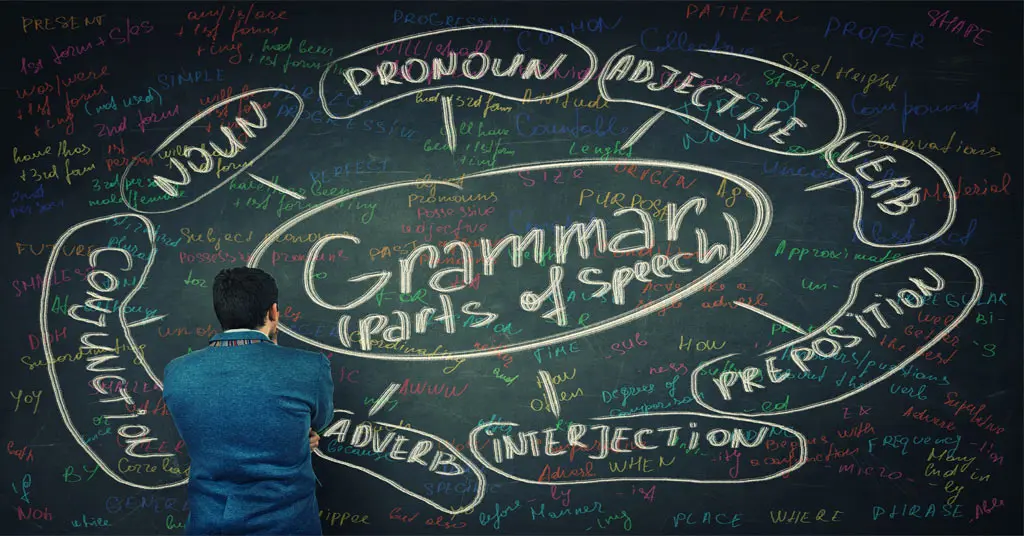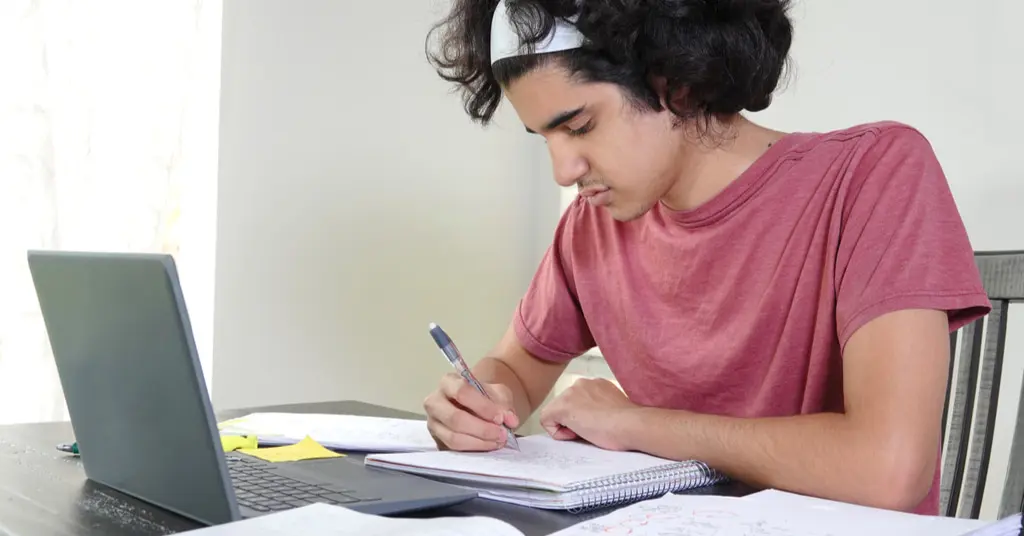Why Reading Books Helps With SAT Reading
Reading widely builds the core skills the SAT measures. Complex stories, essays, and historical texts strengthen your ability to follow an argument, interpret tone, understand structure, and make inferences with accuracy. The more you engage with challenging writing, the easier it becomes to process dense passages under timed conditions.
As you read, you naturally develop habits that mirror the exam. You learn to notice how authors present ideas, how evidence is introduced, and how word choice shapes meaning. These same habits make it easier to recognize how function questions operate in SAT Reading and improve your confidence with approaches to words in context questions. Regular exposure to varied writing styles also prepares you for shifts in purpose, structure, and detail, so you feel more confident applying how big picture questions work alongside strategies for answering inference questions.
As you prepare for the Reading section, consider adding these books to your reading list. The books below reflect the range of styles, themes, and language you will encounter on the SAT exam. They build vocabulary, strengthen comprehension, and help you get comfortable with dense, idea rich writing. The College Board® has an extensive list of 102 books that they suggest reading.
- Anonymous: Beowulf
- Achebe, Chinua: Things Fall Apart
- Austen, Jane: Pride and Prejudice
- Baldwin, James: Go Tell It on the Mountain
- Beckett, Samuel: Waiting for Godot
- Brontë, Charlotte: Jane Eyre
- Brontë, Emily: Wuthering Heights
- Cervantes, Miguel: Don Quixote
- Chekhov, Anton: The Cherry Orchard
- Chopin, Kate: The Awakening
- Conrad, Joseph: Heart of Darkness
- Crane, Stephen: The Red Badge of Courage
- Dickens, Charles: A Tale of Two Cities
- Dostoyevsky, Fyodor: Crime and Punishment
- Douglass, Frederick: Narrative of the Life of Frederick Douglass
- Ellison, Ralph: Invisible Man
- Emerson, Ralph Waldo: Selected Essays
- Faulkner, William: The Sound and the Fury
- Fitzgerald, F. Scott The Great Gatsby
- Hardy, Thomas: Tess of the d’Urbervilles
- Hawthorne, Nathaniel: The Scarlet Letter
- Heller, Joseph: Catch 22
- Hemingway, Ernest: A Farewell to Arms
- Homer: The Iliad
- Hurston, Zora Neale: Their Eyes Were Watching God
- Huxley, Aldous: Brave New World
- Ibsen, Henrik: A Doll’s House
- James, Henry: The Portrait of a Lady
- Kafka, Franz: The Metamorphosis
- Kingston, Maxine Hong: The Woman Warrior
- Lee, Harper: To Kill a Mockingbird
- London, Jack: The Call of the Wild
- Marquez, Gabriel Garcia: One Hundred Years of Solitude
- Melville, Herman: Moby Dick
- Miller, Arthur: The Crucible
- Morrison, Toni: Beloved
- Plath, Sylvia: The Bell Jar
- Remarque, Erich Maria: All Quiet on the Western Front
- Salinger, J.D.: The Catcher in the Rye
- Shakespeare, William: Hamlet
- Shakespeare, William: Macbeth
- Shakespeare, William: A Midsummer Night’s Dream
- Shakespeare, William: Romeo and Juliet
- Shaw, George Bernard: Pygmalion Journey into Night
- Orwell, George: 1984
- Shelley, Mary: Frankenstein
- Silko, Leslie: Marmon Ceremony
- Sophocles: Antigone
- Steinbeck, John: The Grapes of Wrath
- Stowe, Harriet Beecher: Uncle Tom’s Cabin
- Thoreau, Henry David: Walden
- Tolstoy, Leo: War and Peace
- Twain, Mark: The Adventures of Huckleberry Finn
- Voltaire: Candide
- Vonnegut, Kurt Jr.: Slaughterhouse-Five
- Walker, Alice: The Color Purple
- Whitman, Walt: Leaves of Grass
- Wilde, Oscar: The Picture of Dorian Gray
- Woolf, Virginia: To the Lighthouse
- Wright, Richard: Native Son
Why These Books Work for SAT Prep
These titles reflect the complexity found in SAT passages and work well as some of the best books for SAT reading. They include rich vocabulary, layered character development, social commentary, and rhetorical techniques that strengthen comprehension at every difficulty level. Whether you choose many of the books in the list above or select only a few to start with, each one provides the depth and challenge needed for stronger SAT performance.
How to Use SAT Reading Book List: Short-Term vs Long-Term Prep Plans
A good SAT book list only helps if you match it to your timeline. Whether you have a year, a few months, or just a few weeks, you can use the same pool of books in different ways so your reading feels focused instead of random.
Long-Term Plan: 6–12 Months (Ideal for In-Depth Prep)
If you are a year or more away from test day, treat the list as a long reading journey instead of a sprint.
- Aim for 50–110 books over time. Mix long classics (like War and Peace or Jane Eyre) with shorter works and essays so you do not burn out.
- Use monthly “mini lists.” Each month, pick 1 classic novel, 1 modern work, and 1 play or essay. This rotation exposes you to many of the styles you will see in the SAT Reading and Writing section, which helps your reading feel familiar on test day.
- Rotate difficulty. Follow an easier book with a more challenging one so you steadily increase your tolerance for dense language instead of quitting halfway.
Planning this way turns the full SAT reading book list into something manageable and helps you build habits that support the Reading and Writing section rather than just finishing titles for the sake of it.
Medium-Term Plan: About 3 Months (Balanced Approach)
Within 3 months, you should work from a tighter, curated list rather than the full set.
- Focus on 20–30 high-yield books. Choose titles with clear themes, strong arguments, or complex characters so every book teaches you something about structure or tone.
- Create weekly reading goals. For example, two to three chapters on school days and a longer reading block on weekends. This makes it realistic to complete several books before the exam.
- Match books to skills. If you know you struggle with inference, choose layered, character-driven novels. You can also skim strategies to study for SAT Reading and Writing while planning your list, so each book supports a specific skill you want to improve.
This shifts the focus from volume to value: you may not read every book on the list, but the 20-30 you choose will be the ones that actually move the needle.
Short-Term Plan: 4–6 Weeks (Skill First, Not Page Count)
If your test is close, treat the SAT reading list as a tool for sharpening skills, not as a checklist to complete.
- Work from a 10–20 book set. Prefer shorter novels, novellas, plays, and essays so you can finish full works and see how arguments or plots develop.
- Read strategically, not line by line. Focus on introductions, key turning points, and endings. Pause to ask yourself what the author is trying to do in a scene or paragraph, which mirrors how big picture questions work on the test.
- Annotate with the SAT in mind. Mark spots where you could ask an inference question, a words in context question, or a function question. This makes it easier to connect what you are reading to strategies to study for Reading and Writing instead of just getting through chapters.
You may not finish every book you start in this window, but the goal is targeted practice that feels close to the actual SAT exam.
Very Short Plan: 2 Weeks or Less (Excerpts and Targeted Reading)
If you only have a couple of weeks, you can still use the SAT reading book list in a focused way.
- Choose 10 key books and read excerpts. Select chapters that contain turning points, arguments, speeches, or major conflicts so you get maximum complexity in less time.
- Pair reading with quick reflections. After each excerpt, write a one sentence summary of the main idea and one sentence about the author’s attitude. This follows the same thinking as the strategies for answering inference questions and keeps you active while reading.
- Reuse passages like practice sets. Revisit the same pages two or three days later and quiz yourself on tone, purpose, and evidence so your reading supports the kinds of reasoning used in the SAT Reading and Writing section.
In this short timeline, you are not trying to read a full 70 or 110 SAT reading book list. You are using a small, smart selection of pages to sharpen the exact skills that will show up on test day.
Which SAT-level books can help improve reading skills?
Books that closely mirror the style and difficulty of SAT passages tend to strengthen your reading skills the most. Titles with layered themes, precise language, and clear shifts in structure train you to notice the same patterns that appear in exam passages. Classic novels, modern fiction, historical works, and essays all help you practice reading with purpose, evaluating how ideas develop, and recognizing an author’s tone or intent.
Shorter works like novellas, speeches, or reflective essays are especially useful because their concise structure makes it easier to observe how arguments unfold and how evidence is presented. When you balance longer texts with these focused readings, you sharpen the skills needed to interpret vocabulary in context, follow transitions, and understand why an author chooses specific details.
If you want to connect what you read to SAT-style reasoning, pairing your book list with targeted practice in the SAT Question Bank can help reinforce how these reading skills show up in actual exam questions. This combination of real literature and structured practice gives you a stronger sense of how the test measures understanding, analysis, and precision.
Tips for Reading These SAT Books Effectively
Using the right reading approach can make these books far more helpful for SAT prep. Small adjustments in how you read can strengthen comprehension, build stamina, and improve the way you analyze passages.
- Pause at the end of each chapter to restate the main point in your own words so you train your brain to recognize how ideas build across a passage.
- Use surrounding context to predict the meaning of unfamiliar vocabulary before checking a definition, since the SAT focuses on how words function within sentences.
- Pay attention to structure by noticing shifts in tone, turning points in a plot, or changes in an argument’s direction, since these moments often reflect the kinds of questions you will see on the exam.
- Adjust your pace based on difficulty. Slow down during dense or philosophical chapters and move faster through lighter moments to build comfort with different levels of complexity.
- Mix longer novels with shorter works like essays, speeches, or novellas so you can practice observing both detailed development and concise reasoning.
For added support, you can strengthen these reading habits with theSAT Review Course, which provides guided examples that show how these same skills appear in real test style passages.
SAT Reading Books List: Frequently Asked Questions (FAQs)
Do I need to finish entire books or just read excerpts?
You do not need to finish every book for your reading practice to be effective. Full novels help build stamina and deepen your understanding of an author’s style, but excerpts can be just as valuable when time is limited. Focusing on key chapters, turning points, and richly written sections helps you practice identifying main ideas, tone shifts, and structural patterns. Since the SAT often uses short passages, excerpt based study can mimic the pacing and comprehension skills you will rely on during the exam. If you combine both approaches, you get the benefits of long-form reading without feeling overwhelmed.
Which genres are most useful for SAT Reading practice?
A mix of genres gives you the best preparation because the SAT includes passages that vary widely in style and purpose. Literary fiction strengthens your ability to track character development and interpret subtle tone shifts. Historical or social science-based nonfiction helps you practice analyzing arguments and understanding how evidence is used. Poetry and drama build sensitivity to language and structure, especially when meaning is implied rather than stated directly. When you rotate through genres, you become more flexible in how you approach unfamiliar passages on test day.
How many books should I read before the SAT?
Most students benefit from reading at least 10 to 20 thoughtfully selected titles, though reading more can strengthen your skills even further. The right number depends on your timeline and how quickly you absorb complex writing. Quality matters more than quantity, so choose books that challenge your comprehension rather than rushing through a long list. If you want structured guidance on how to pace your reading and connect it to test skills, the SAT Preparation Books can help you design a realistic plan.
Does reading help more than doing practice questions?
Reading builds foundational skills like comprehension, inference, and vocabulary awareness, but it works best when paired with actual SAT-style questions. Books strengthen the way you process ideas, while practice questions sharpen your accuracy and timing under exam conditions. Both are essential because one trains your mind and the other trains your performance. When you combine steady reading with timed sets or a full SAT Exam Practice Test, you learn how to apply what you have read to the types of questions you will face on test day.




